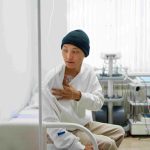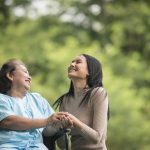Changing Trends in Breast Cancer
The ultrasound image on my computer screen displayed a 3cm irregular breast mass that was highly suspicious for cancer. The patient sitting in front of me, understandably anxious, was 35 years old with 2 young children. She would be the 3rd patient in these 2 weeks under the age of 40 that I would diagnose with breast cancer.
This scenario plays repeatedly in many breast surgeons’ offices in Singapore. It is not supposed to. Breast cancer screening in Singapore is recommended only from age 40. In some other countries, it begins from age 50. But throughout Southeast Asia, breast specialists are seeing more young women under the age of 40 with breast cancer.

| Reproduced from “Trends in female breast cancer among adolescent and young adults in Southeast Asia”, The Lancet Regional Health – Southeast Asia 2025;34:100545. |
The graph above illustrates breast cancer incidence rates among young women under the age of 40. In all the eleven countries studied, there was a trend towards rising incidence rates, with Thailand, Singapore and Malaysia topping the numbers. The numbers are expected to spike further this decade as the backlog from delays in seeking medical attention due to COVID19 presents itself.
Why are we seeing this trend? It is postulated that changes in women’s hormonal and reproductive patterns and lifestyles in the past decades contribute significantly to these trends. Well recognised risk factors for breast cancer include later age at first pregnancy, fewer pregnancies, reduced breastfeeding duration and prolonged use of oral contraceptives. Improved socio-economic status also contributes to early menarche (age at first menses) and possible later age at menopause. Sedentary lifestyle with reduced physical activity, obesity, alcohol and smoking habits also contribute to risk.
What about genetic factors? Overall, about 5-10% of women with breast cancer will be found to have a dominant hereditary cancer gene mutation. Young age at diagnosis, bilateral breast cancer, personal history of other cancers or a family history of cancers should support the decision for genetic testing.
Many studies have demonstrated that breast cancer that occurs in young women tend to have poorer outcomes. The tumours tend to be larger, higher grade, of an aggressive profile and with spread to lymph nodes. Follow up studies suggest higher recurrence risks and lower survival in younger women.
The reason for poorer survival data in young women is multifactorial. It is well acknowledged, as described above, that the biological profile of breast cancers in young women is more aggressive, which likely plays a major role in the poor longer survival outcome. Possibly compliance to treatment may be another contributing factor, where fear of chemotherapy or long-term effects of endocrine therapy may impact on the patient completing the recommended treatment regime.
In the graph below illustrating breast cancer mortality in young women, Singapore experienced a significant decline in mortality since 1990, despite the other Southeast Asian countries experiencing stable or gradual increase in mortality. This may be due to a greater awareness and improved access to treatment, and brings hope that despite the more aggressive profile of breast cancer in young women, high cure rates can still be achieved with appropriately aggressive treatment as well.

| Reproduced from “Trends in female breast cancer among adolescent and young adults in Southeast Asia”, The Lancet Regional Health – Southeast Asia 2025;34:100545. |
Where do we go from here? We need to increase awareness amongst young women and even healthcare professionals. Women should learn and practice breast self-examination from age 25. Lifestyle modifications for a healthy diet, regular physical activity and reducing obesity can lower one’s risk. Nurses and doctors in community practice should be more proactive in evaluating young women presenting with breast symptoms. Understanding that dense breasts in young women may obscure mammographic findings and supplementing mammography with ultrasound for evaluation should be considered. Awareness campaigns for breast cancer should include young women as well. As a society, we can better support young women requiring breast cancer treatment with child and family care assistance, improved work arrangements and even financial assistance for expensive modern therapeutic drugs.
A diagnosis of breast cancer can be devastating, all the more in a young woman who is at the prime of her life. Aside from preventive measures, awareness strategies for early access and evaluation by healthcare professionals may help us to curb this epidemic. Breast cancer is the most common cancer among women in most countries. But it is not infallible.
References:
- Chen J, Ho FDV, Feliciano EJG, et al. Trends in female breast cancer among adolescent and young adults in Southeast Asia. The Lancet Regional Health – Southeast Asia 2005;34:100545.
- Zhu JW, Charkhchi P, Adekunte S, et al. What is known about breast cancer in young women? Cancers 2023;15, 1917.
About Our Cancer Stories
Our Cancer Stories is a research project funded by National University of Singapore (NUS) Initiative to Improve Health in Asia (NIHA) under the management of the Global Asia Institute (GAI).






